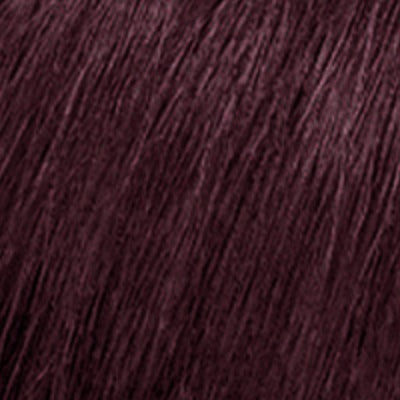What to Check When Your Quiet Hair Dryer Loses Power
It can catch you off guard—the moment your quiet hair dryer just stops in the middle of your routine. You're halfway through styling, only to find the motor has gone silent with no warning. While these devices are built for minimal noise and comfort, that quietness can make it harder to notice when something’s starting to go wrong. When your hair dryer loses power, it doesn’t always mean it’s time for a new one. Sometimes, the issue is small and fixable.
Instead of rushing out to replace it, take a moment to figure out what’s really going on. A random power issue isn’t always about a broken product. It could be the outlet, the cord, or a clogged filter causing the unit to overheat and shut down. Knowing what signs to watch for can save time and stress.
Common Causes of Power Loss
When a quiet hair dryer loses power, the best place to start is with the most obvious issues. These tools may look simple, but several things can interrupt their performance.
Common problems include:
- Faulty power source: Before blaming the dryer, check that the plug is firmly seated in the wall socket. Loose or old outlets might cause the power to drop, making it seem like the device is faulty.
- Damaged power cord: If the cord is frayed, bent often in one spot, or has exposed wires, it might short out during use. This can lead to sudden shutdowns or no power at all.
- Overheating due to blockages: Quiet models often have smaller, more sensitive filters that clog easily. Dust or lint buildup blocks airflow, causing automatic shutdowns to protect the motor.
- Faulty power switch or internal button: If the switch feels loose, stuck, or doesn’t click like it used to, the internal connections might be failing.
- Blown fuse or tripped internal safety: Some dryers contain built-in fuses that shut things down to avoid damage. If the fuse blows, the dryer won’t turn on, even if nothing else seems wrong.
Look for signs that help isolate the issue. For example, if it works when you twist the cord a certain way, there’s likely a wiring issue. If it runs and then suddenly shuts off each time, overheating might be the cause.
Catching these signs early gives you the best chance of a simple fix. In some cases, flipping a switch or checking your plug might be all it takes. In others, calling in a technician could be the safer choice.
Initial Troubleshooting Steps
Once you’ve considered some of the common causes, try a few basic checks before moving on to anything more involved. These initial steps are easy to do and may save you from bigger repairs.
1. Unplug and inspect: Always unplug the device before inspecting anything. Look at the plug for signs of melted plastic, scorch marks, or bent prongs.
2. Try a different outlet: Plug the dryer into another outlet that you know works. Avoid using extension cords, power strips, or travel adaptors during this test.
3. Check the power cord: Run your fingers along the full length of the cord. Look for thin or soft spots where the inner wire might be damaged.
4. Clean the filter: Most quiet hair dryers have a removable filter on the back. If there’s visible dust or debris, gently clean it using a soft brush or a vacuum with a brush attachment.
5. Press the reset button: Some dryers have a reset switch near the plug. Press it firmly and plug the unit back in to see if power is restored.
Double check for any strange smells, burning scents, or visible debris inside the vent area before turning it back on. If everything looks and smells normal, plug it back in and test it.
If the dryer still doesn’t work or turns off after a minute or two, then it’s likely a more complex issue.
Advanced Troubleshooting Techniques
If those basic checks don’t fix the problem, it might be time to consider issues that are a bit harder to deal with on your own. Even though most hair dryers aren’t designed to be taken apart at home, there are still some signs that might point to what’s going on.
Start with the vents and casing. Even if the outer filter looks clean, debris can creep deeper into the inside of the dryer. If airflow feels weak or warm even when it starts, there may be a pile-up of lint or product residue inside the barrel or vent area. This causes overheating, which may trigger the dryer’s auto-shutdown.
Next, look at the power switches or heat settings dial. If these buttons don’t click properly or shift freely like they used to, the connection points might be worn. Over time, regular use can loosen internal contacts until they barely work. Most repairs for these types of issues require testing with proper tools and re-soldering of parts, so it’s best left to a technician.
Some models come with a built-in thermal fuse. This component is designed to blow—and stay that way—if the dryer gets too hot. If your hair dryer suddenly turned off after smelling hot but didn’t show any outside damage, this could be the cause. Unfortunately, the fuse usually can’t be reset and will need replacing.
Moisture inside the device is another tricky problem. Steam from showers or storing your dryer under the sink can cause condensation to form inside the unit. Even a small amount of dampness can compromise the internal circuitry. If your hair dryer starts behaving oddly without visible damage, moisture buildup might be to blame.
For anything internal, like exposed wiring or fuse replacement, taking it to a technician is the safest move. Avoid opening the dryer yourself, as even an unplugged tool can hold leftover electricity for a short time.
Hair Dryer Maintenance to Prevent Future Issues
Adding a bit of regular maintenance can keep your hair dryer running well for longer. Quiet models benefit from good airflow, clean filters, and dry storage—all of which help avoid surprise power loss.
Here are some easy habits to pick up:
- Clean the filter regularly: Once every couple of weeks, depending on how often you use it. A clogged filter means more heat builds up around the motor.
- Let it cool down: Don’t put the dryer away while it's still warm. Let it sit out on a heat-safe surface until fully cool.
- Store it somewhere dry: Bathrooms are steamy by nature, so aim for a linen cupboard or even a drawer in the bedroom that stays fresher.
- Wrap the cord loosely: Avoid wrapping the cord tightly around the handle. Loop it gently and avoid twisting or pinching it too tightly.
- Keep it away from heat sources: Never leave the cord near heated tools or on radiators. Heat can melt or damage the wiring inside.
- Use a surge protector: If your dryer shuts off during storms or lights flicker in your home, a surge protector helps protect its small internal circuits.
Following these small tips gives your quiet hair dryer the best chance of running smoothly. Most maintenance only takes seconds and can help avoid much bigger problems later on.
Keep Your Hair Dryer Running Smoothly
A quiet hair dryer going silent at the wrong moment is more than frustrating. But with a bit of patience and the right checks, it can also be a quick fix. Power issues are often about the little things—a blocked filter, a bent cord or a loose plug—and don’t always mean your dryer is done for.
Knowing what to watch for helps you fix minor issues before they become major ones. And if your dryer has seen better days, understanding why it stopped working can guide your next buy.
Whether you’re freshening up before work or getting ready for bed, your tools should work the way you need them to. Keeping your hair dryer clean, dry, and properly stored will go a long way in keeping your routine stress-free.
Taking care of it means one less thing to worry about in the mornings. And when the time does come for a replacement, you’ll know exactly what you want—quiet, reliable, and built to last.
Whether you're making the most of your quiet hair dryer or thinking about an upgrade, treating your go-to tool with care can make all the difference. For dependable, high-performing choices, check out our carefully curated selection of electricals at Smooth & Charming by exploring our quiet hair dryer collection today.




